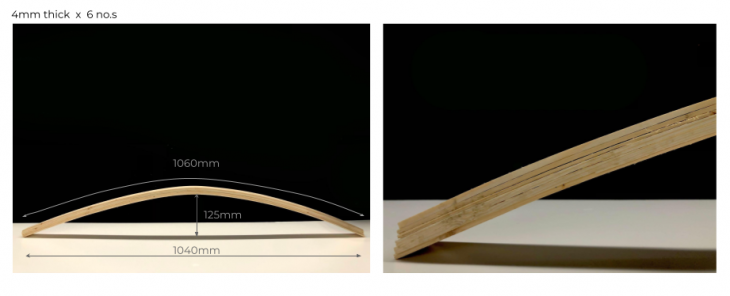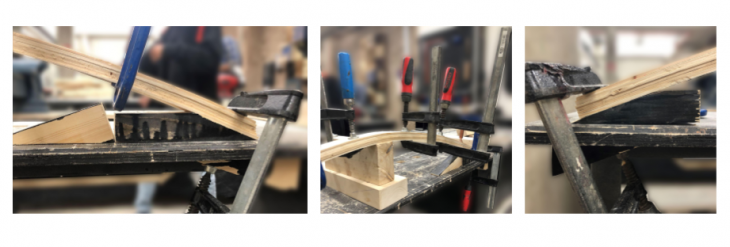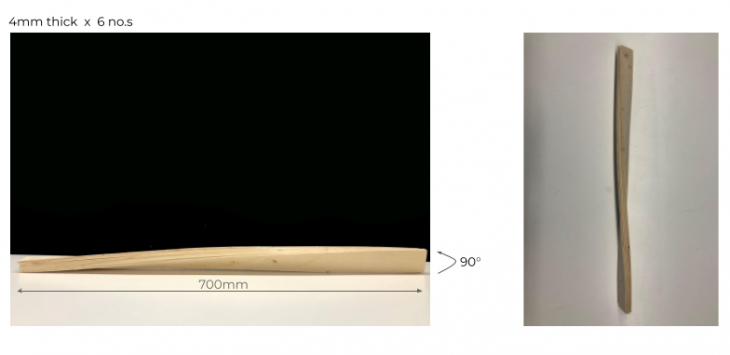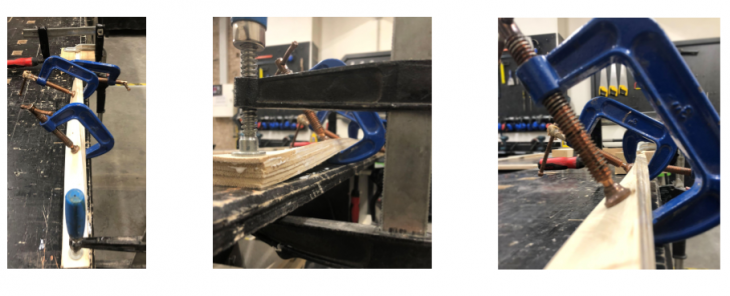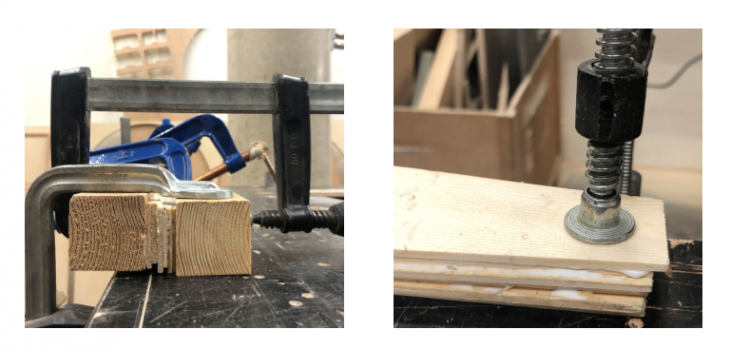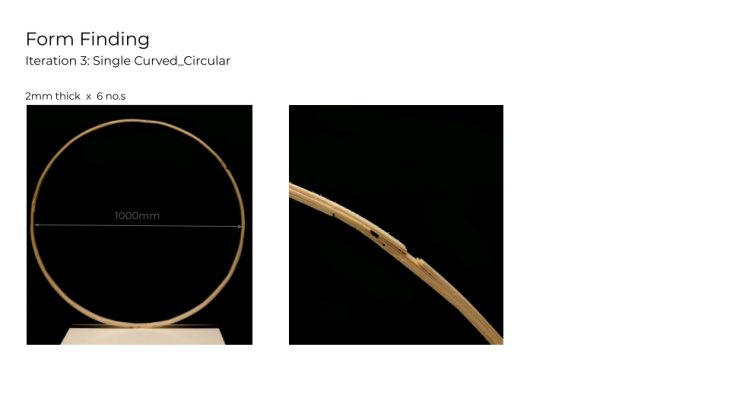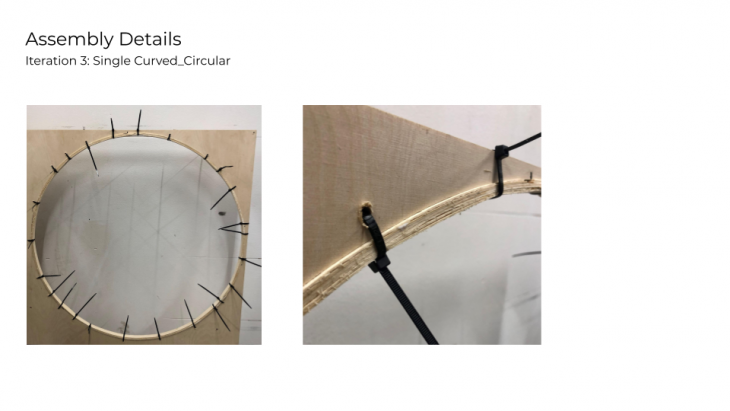Abstract
The Digital Woodcraft Studio introduced us to the technique of Glulam, in which many llamelas (strips) of timbers are glued on top of each other to increase the bending of the wood and making it much simpler to give the desired shape. These glued llamelas are kept on a form work and clamped do give it a perfect form. The design we made was a paraboloid structure which was worked on by a group of 11 students.
Form Findings
Firstly, we experimented forms with the help of paper. This allowed us to explore forms without restrictions, with this we can later determine the scale of the design we need to create. Also, its much easier to acquire curved surfaces with the help of paper. The following are the models that were prepared.
Form 1 : Sculptural Element
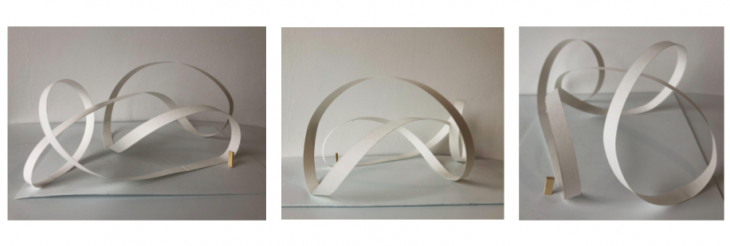
Form 2 : Shading Element
From the above experimentations, we can get two different types of forms. One is a sculptural form, where the shape has an emphasis on continuity and weave; The other has a roofing element to the for which will be good for shading patterns.
Physical Experiment
There are two different iterations of designs – single curved element and double curved element. The following experiments below will show the shapes achieved from thin wooden llamelas.
Iteration 1: Single Curved
Assembly Details
Iteration 2: Double Curved
Assembly Details
Design Formation from Kangaroo
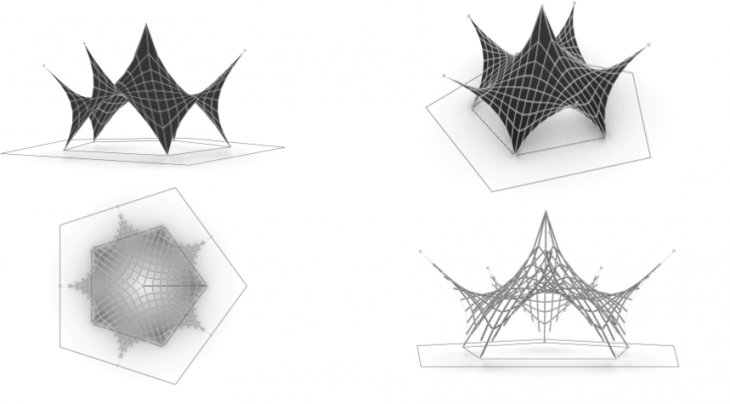
Option 1
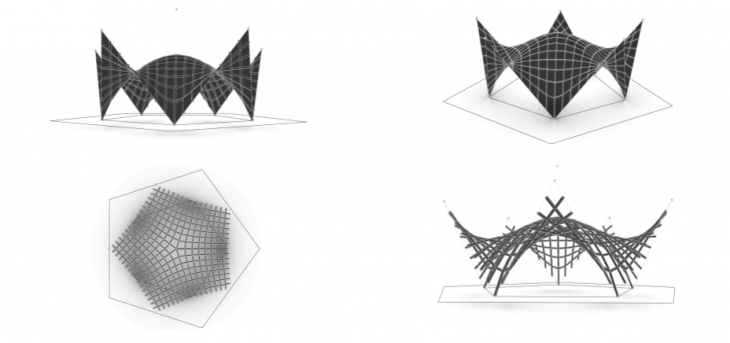
Option 2
After we get the design, we move on ahead with making design and formation of structure.
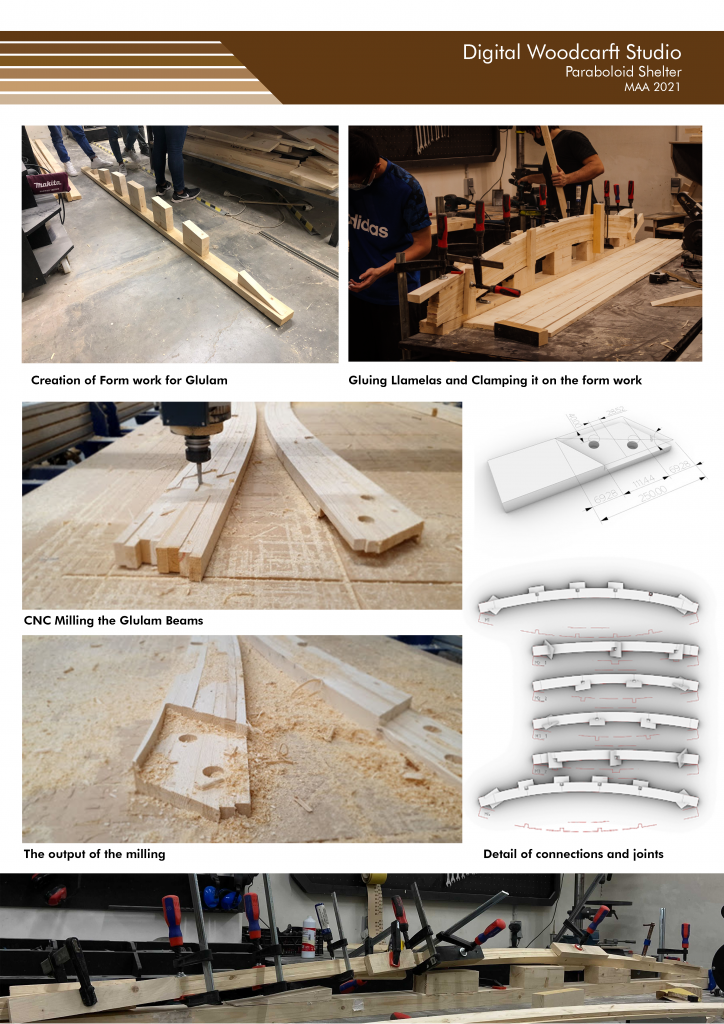
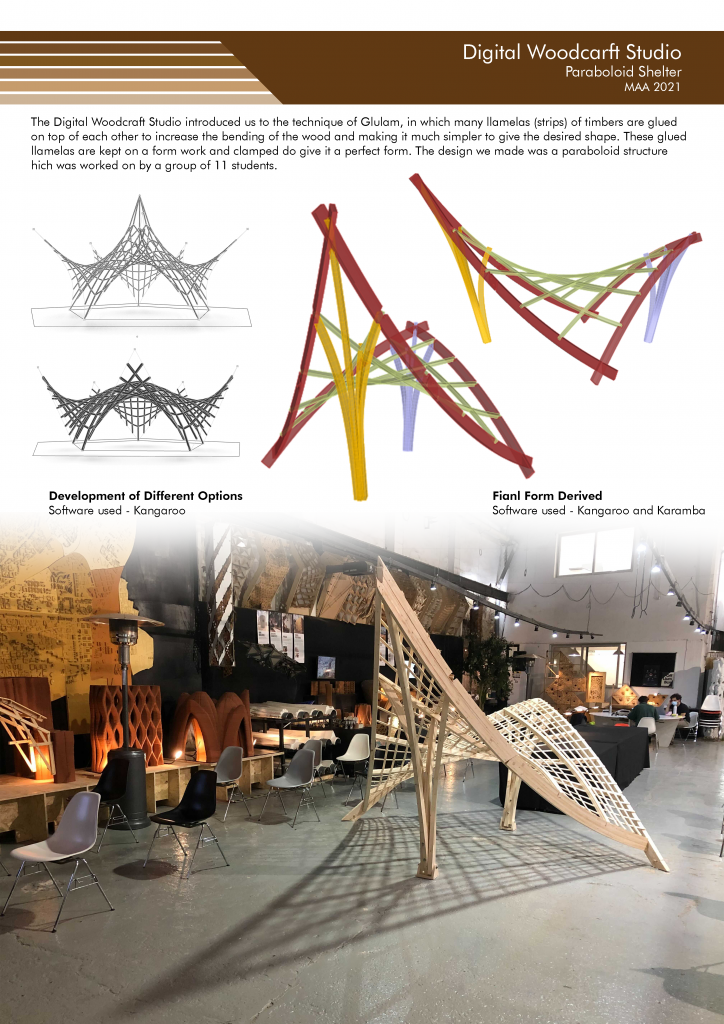
Credits
Experimenting with Curved Glulam Beams is a project of IAAC, Institute for Advanced Architecture of Catalonia developed in the Master in Advanced Architecture 2020/21 by students: Shubham Dahedar and Hairati Tupe, faculty: Tom Svilans & faculty assistant: Shyam Zonca.

